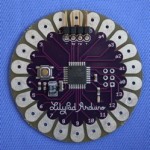May23
Learning Across Industries
Point: To successfully apply another company’s best practices, select a company that matches your organization on essential dimensions.
Story: RailTex Service Company (now RailAmerica) was experiencing fast growth and wanted to know: “How have other companies handled fast growth?” Could lessons learned by other companies be applied to our organization?
Railtex was already at the leading edge of railroad industry, so limiting themselves to learning from other railroad companies would be too restrictive. So how did Railtex find suitable companies in other industries to learn from? Railtex first listed the features of its situation and then identified companies that matched those features. That way, the lessons learned would be more likely to apply to Railtex as well. Railtex listed the features:
- growth by acquisitions
- independent managers run each line business
- incentive-based compensation
- a team concept
- senior executives at a remote location.
Bob Lende, Railtex’s Vice President of Finance at the time, found that Luby’s Cafeterias paralleled Railtex on all the listed features. Luby’s had 100 cafeterias and was adding one a month. Railtex expected such growth as well. Railtex contacted Luby’s executives, who were proud to talk about how they handled their growth. The lessons were applicable to Railtex because Railtex found a match with Luby’s in size, type of growth, and management style. Both were growing by adding geographic locations in a franchise-type way.
Action:
- Decide what it is that you want to learn. For example, do you want to improve a process?
- Choose a learning partner. You don’t have to limit yourself to other companies in your industry. Rather, choose companies that have succeeded in accomplishing what you want to accomplish and look for company features that match your company. Like Railtex matched Luby’s Cafeterias, look for firms that match your company on features like size, budget and culture. The more features that match, the easier it will be for you to adapt the partner’s lessons to your situation.
- Decide what you can offer the partner in return. What does your company do well that you can teach others?
- Go with a goal. If you will be visiting another company, go there with a goal in mind. A goal will help you focus your observations.
- Share your findings throughout your company. By reporting what you have learned, you’ll not only be spreading the knowledge throughout the company, but you’ll also be clarifying and defining the key learnings for yourself.
Comments Off on Learning Across IndustriesCase study, Growth, How-to










